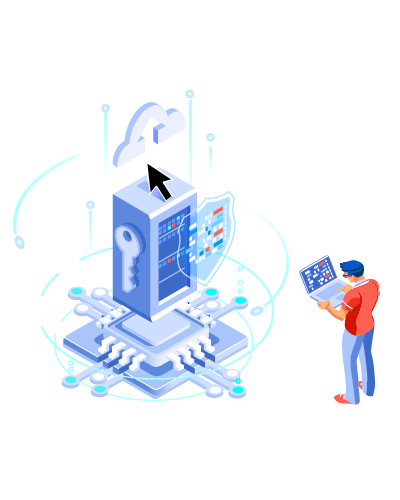Encrypt your data by design
All data is encrypted using Data Lock. Even with SA or DBA user, data will be unreadable
Encryption
99.9% of the biggest databases are unencrypted, leaving data as plaintext, ready to be read and used by anyone that could access it even without privileges. To be effective, data should be encrypted in it's raw state. When encrypted table, record or column data is intercepted by an unauthorized entity, the intruder has to guess which algorythms, keys and ciphers the sender used to encrypt the message, as well as what keys were used as variables. The time it takes to guess this information is what makes encryption such a valuable security tool

Asymmetric ciphers
Also known as public key encryption, use two different -- but logically linked -- keys. This type of cryptography often uses prime numbers to create keys since it is computationally difficult to factor large prime numbers and reverse-engineer the encryption. The Rivest-Shamir-Adleman (RSA) encryption algorithm is currently the most widely used public key algorithm. With RSA, the public or the private key can be used to encrypt a message; whichever key is not used for encryption becomes the decryption key.

Column-level encryption
Is an approach to database encryption in which information in every cell in a particular column has the same password for access, reading and writing purposes. Data Lock expanded this approach by creating a proprietary method to enhance and add additional layers of security checks.

Multiple Data Security Access
Data Lock has 6 conditions that defines access to information
Single user
Only one user using the same code can access data at the same time. This prevents using a single user by multiple persons
Token access
Data Lock provides a complex securiry access combined with username/code
Location
Limit user access based on location

Time period
Allow user access based on a specific schedule, specific days of a week, specific consecutive hours access
Object access
List only objects - tables, views, procedures, among others - that users can see
Data/row access
Apply filter conditions to allow only access to specific datasets (row level security)
How Does It Work?
Add our API layer to your ETL process. Read and Write will be as always, but data will never be exposed again.

Using our API, changing existing processes is easy and simple.
Every access token is individual. Create profiles and re-use them across multipe tokens
Check your data without using our API. It's qiBTIaKln4P4oAvt1lFkBO+XBXe4ZOyAlL5+jSg6Tls=
Already have a huge database exposed? No worries, we provide a re-write process to encrypt all your existing data
Talk with us
Want to know more about this solution or other service? Click in one of the options below
